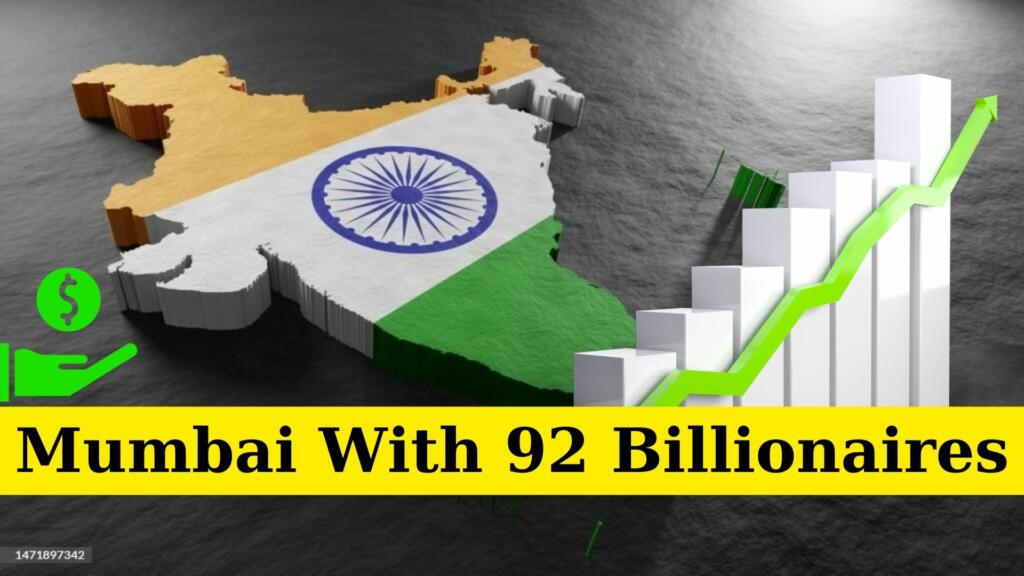India’s economic landscape is undergoing a remarkable transformation, marked by significant milestones such as robust GDP growth, a surging stock market represented by the NIFTY index, and Mumbai’s newfound status as Asia’s billionaire capital. This article aims to delve into the interconnected factors driving India’s economic prowess, the impressive performance of the NIFTY index, and the burgeoning billionaire community in Mumbai.
Economic Growth and Policy Reforms
India’s economic growth trajectory has been propelled by diverse sectors such as technology, consumer goods, and infrastructure, contributing to its emergence as a global economic powerhouse. The government’s strategic policies and reforms have played a pivotal role in fostering business growth, attracting investments, and driving overall economic development. Initiatives, like Make in India, and Digital India, and infrastructure projects such as Bharatmala and Sagarmala, have spurred innovation, enhanced productivity, and facilitated seamless connectivity across the nation.
Despite global uncertainties, India’s economy has exhibited resilience and potential, as reflected in key economic indicators like the GDP growth rate. Despite challenges, India has sustained robust growth rates, buoyed by domestic consumption, favorable demographics, and a thriving entrepreneurial ecosystem. Moreover, structural reforms such as the Goods and Services Tax (GST), bankruptcy code, and labor reforms have streamlined business processes, improved ease of doing business, and bolstered investor confidence.
NIFTY’s Stellar Performance
The NIFTY index has exhibited a remarkable surge, recording its strongest performance since 2010, which underscores India’s robust economic growth and investor optimism. Several factors have contributed to this upward trajectory, including heightened investor confidence, positive economic indicators, and growing global interest in India’s economic potential.
Investor confidence has been buoyed by India’s resilient economic performance amidst global uncertainties, coupled with proactive government policies and reforms aimed at fostering business growth and investment. Moreover, India’s demographic dividend, burgeoning middle class, and expanding consumer market have attracted considerable investor attention, driving capital inflows into the country.
Positive economic indicators such as strong GDP growth, improving industrial production, and stable inflation rates have further bolstered investor sentiment towards Indian equities. Additionally, India’s emergence as a key player in sectors like technology, healthcare, and renewable energy has fueled optimism about its long-term growth prospects.
Within the NIFTY 50, specific sectors and companies have outperformed, contributing significantly to the index’s surge. Companies like Bajaj Auto, Tata Motors, and Adani Ports and Special Economic Zone have been standout performers, driven by factors such as product innovation, market expansion, and strategic initiatives.
Bajaj Auto’s stellar performance can be attributed to its successful capitalization on the premiumization trend in the two-wheeler segment, coupled with a mega buyback program that boosted investor sentiment. Tata Motors’ strong presence in the luxury car and electric vehicle space, particularly through its subsidiary Jaguar Land Rover, has propelled its growth trajectory. Adani Ports and Special Economic Zone’s resurgence following previous setbacks underscores the growing prospects of India’s ports sector and the company’s robust standing in the market.
Also Read: India’s Economic Renaissance: Charting a New Course Through TEPA with EFTA
Mumbai: Asia’s Billionaire Hub
Mumbai’s ascent as Asia’s premier billionaire hub represents a significant milestone in the region’s economic landscape, surpassing traditional powerhouses like Shanghai and Beijing. This transformation underscores Mumbai’s evolving role as not just India’s financial capital but also a global center for wealth creation and entrepreneurship.
Several factors have contributed to Mumbai’s emergence as Asia’s billionaire capital. Firstly, Mumbai’s status as India’s financial powerhouse has attracted a concentration of wealth and talent, with the city serving as the epicenter of the country’s banking, finance, and capital markets. The presence of major financial institutions, stock exchanges, and corporate headquarters has fostered an environment conducive to wealth accumulation and investment.
Furthermore, Mumbai’s dynamic and diverse business ecosystem, coupled with its strategic geographic location, has facilitated trade and commerce, thereby fueling wealth creation across various industries. The city’s robust infrastructure, including modern transportation networks and commercial real estate developments, has provided a solid foundation for business growth and expansion.
Billionaires from Mumbai
Notable billionaires from Mumbai span a wide range of industries, exemplifying the city’s diverse entrepreneurial landscape. Mukesh Ambani, chairman of Reliance Industries, stands out as one of Mumbai’s most prominent billionaires, with significant contributions to sectors such as petrochemicals, telecommunications, and retail. His visionary leadership has propelled Reliance Industries to become one of India’s largest conglomerates.
Adi Godrej, chairman of the Godrej Group, is another notable figure in Mumbai’s billionaire community, with interests spanning consumer goods, real estate, and agribusiness. His innovative approach to business and commitment to sustainability have positioned the Godrej Group as a leader in its respective sectors.
Other notable billionaires from Mumbai include Uday Kotak, founder and CEO of Kotak Mahindra Bank, who has played a pivotal role in shaping India’s banking and financial services landscape. Additionally, entrepreneurs like Cyrus Poonawalla, founder of the Serum Institute of India, have made significant contributions to healthcare and pharmaceuticals, elevating Mumbai’s status as a hub for innovation and industry leadership.
Implications and Future Outlook
India’s economic growth, coupled with NIFTY’s surge and Mumbai’s billionaire boom, signals a significant shift in global perceptions and investment opportunities. These developments showcase India’s attractiveness as a key player in the global economy, enticing investors with its resilience, potential, and dynamic business environment. The implications are far-reaching, with India’s success bolstering confidence in emerging markets and reshaping investment strategies worldwide.
Looking ahead, India’s economic trajectory appears promising, fueled by technological advancements, ongoing policy reforms, and evolving geopolitical dynamics. Continued focus on innovation, infrastructure development, and inclusive growth will be crucial for sustaining momentum and solidifying India’s position on the global stage.
In Conclusion, India’s economic ascent, exemplified by the remarkable performance of the NIFTY index and Mumbai’s billionaire surge, underscores the nation’s resilience, potential, and attractiveness as an investment destination. As India continues on its path of growth and development, leveraging its strengths and addressing challenges, the prospects for sustained prosperity and prominence on the global stage remain promising.
Also Read: The Rising Bharat: PM Modi’s Vision for The Next 25 Years of India’s Future
